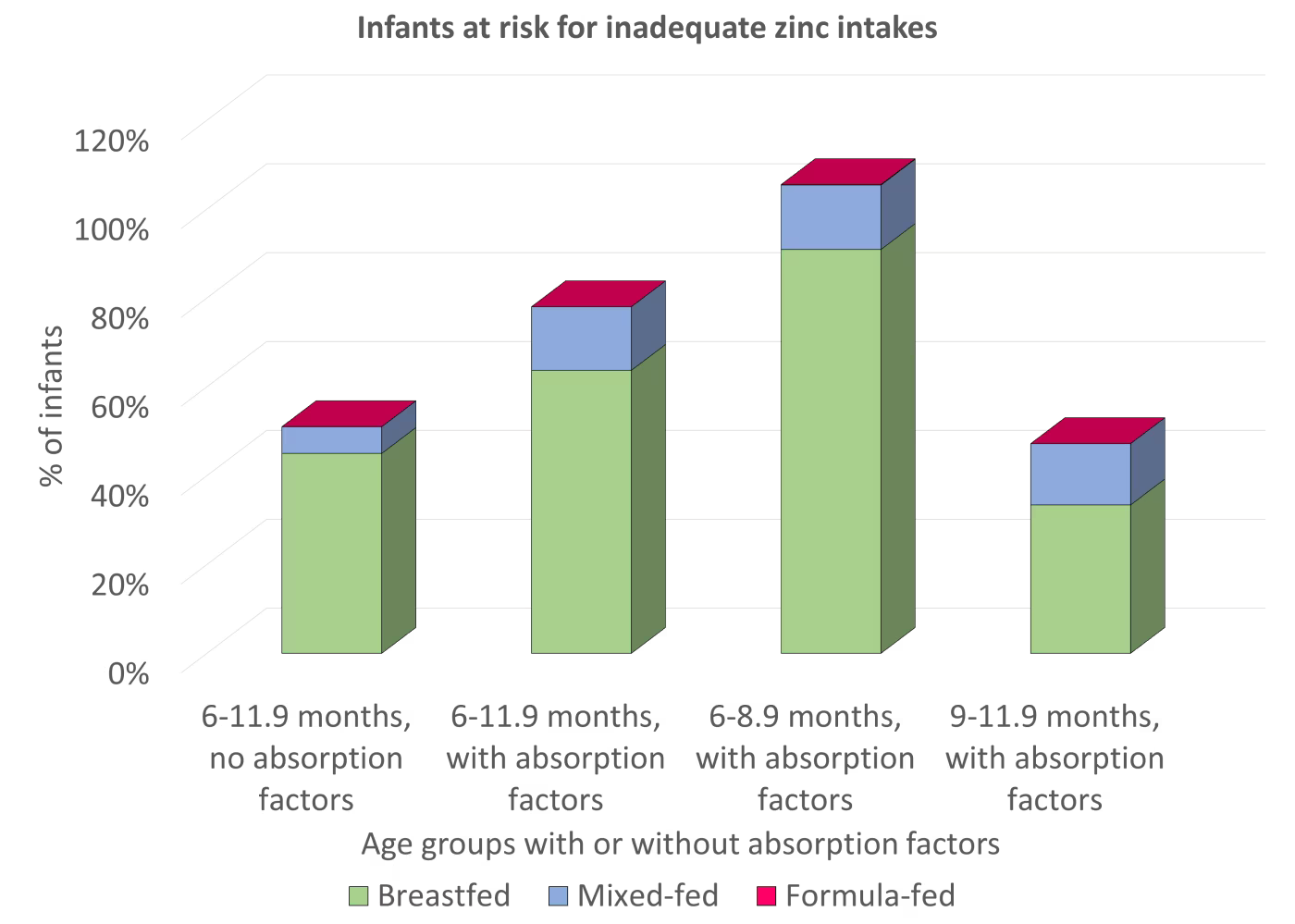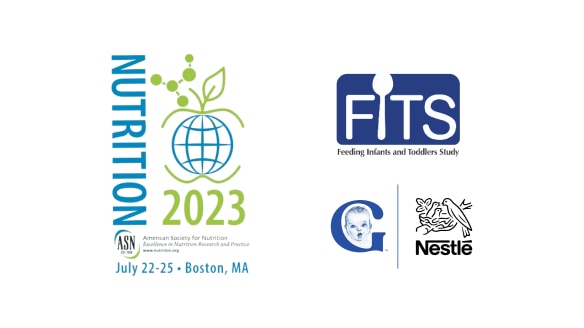Low Zinc Intake Among Breastfed Infants
3 min read • By: Kristin Finn1, Joel Hampton2, Susan Pac3
1DSM Nutritional Products; 2RTI International; 3Gerber Products Company, Nestlé Nutrition

Quick summary
At the American Society for Nutrition Conference, Gerber presented their poster for a study determining infant zinc absorption. Using data from FITS, they concluded that breastfed and mixed-fed infants are at risk for inadequate zinc intake. Guidance for complementary foods containing zinc for infants receiving any breast milk may be warranted.
Zinc absorption study
Background
Zinc is essential for growth and development. Older breastfed infants are susceptible to zinc deficiency due to inadequate intake and low bioavailability from weaning foods.
Objective
Compare estimated total daily zinc absorption of 6-11.9-month-old infants according to feeding type (breastfed, mixed fed, or formula fed) and to requirements for growth.
Methods
Food intake data from the Feeding Infants and Toddlers Study was utilized to calculate zinc intakes.
The level of zinc in human milk was adjusted from 1mg/600ml to 0.5mg/600ml to reflect the amount of zinc estimated to be in human milk at around 6 months of age.
Estimated absorption efficiency was used to account for bioavailability of food sources and estimate the percentage of infants at risk for inadequate zinc intakes to achieve absorptive needs according to feeding type.
Food sources of calculated absorbed zinc were ranked for each feeding type group.
Results
Among 6-11.9-month-olds, more breastfed infants were at risk for inadequate zinc intakes (45%) compared to mixed- (6%) or formula-fed infants (0%).
When absorption factors were applied, more breastfed and mixed fed infants were at risk for inadequate zinc intakes (63.7% and 14.3% respectively).
Breastfed and mixed fed infants in the 6-8.9-month-old age group were most at risk with 90.9% and 14.5% having calculated absorbed intakes below the absorbed zinc requirement, respectively.

Conclusions
Breastfed and mixed fed infants are at risk for inadequate zinc intakes, especially when first starting complementary foods.
Guidance for complementary foods containing zinc for infants receiving any breastmilk may be warranted.
Practice Applications
The Dietary Guidelines for Americans (DGAs) 2020-2025 recommendations for Infants & Toddlers include:
- Encouraging a variety of foods from all food groups. Include foods rich in iron and zinc, particularly for infants fed human milk.
- Introducing, at about 6 months of age:
- Iron-rich foods (meats and seafood rich in heme iron, iron-fortified infant cereals)
- Zinc-rich foods (meats, beans, fortified infant cereals)
- A variety of foods from all food groups, knowing it may take up to 8 to 10 exposures for infants to accept a new food.
While the DGAs emphasize zinc for breastfed infants, these new findings show that some mixed-fed infants are at risk for low zinc intakes when absorption factors are taken into consideration.
Food sources of zinc for infants include fortified infant cereals and infant meat purees.



